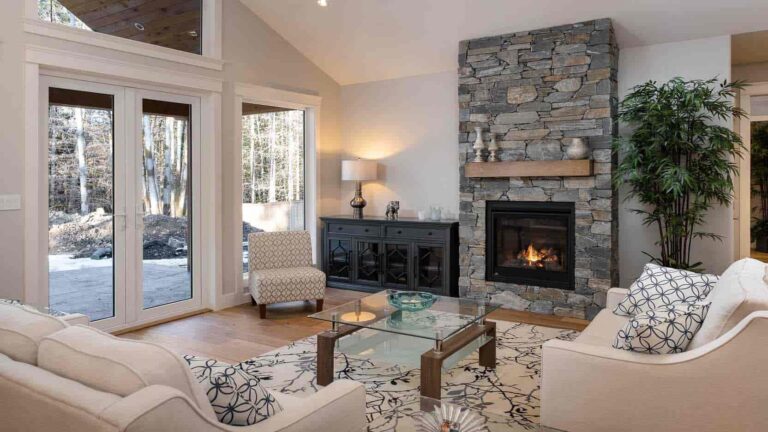You know what gets me excited about custom homes? The fact that you can make every single choice yourself. From the floor plan to the ceiling height to how many windows face that perfect view.
When my sister built her custom home last year, she kept calling me about every little decision. “Should the kitchen island be four feet or five feet?” “Do you think I need a mudroom?” It might sound exhausting, but that’s exactly what makes a custom home special – it’s built just for you.
According to the National Association of Home Builders, only about 20% of new homes built in America are truly custom. That’s because most people go with production homes or semi-custom options. But for those who want absolute control over their living space, nothing beats going fully custom.
What Are Custom Homes?
A custom home is exactly what it sounds like – a one-of-a-kind house built from scratch according to your specifications. Unlike tract homes or production homes where developers build multiple similar houses using a few floor plans, custom homes are unique.
To ensure accurate budgeting for every unique feature, many builders rely on professional take off services to measure and quantify all materials required for custom builds.
When you build custom, you work with architects and builders to create something that doesn’t exist anywhere else. You pick the lot. You approve the plans. You select everything from doorknobs to drainage systems.
My friend Mad built a custom home last year and included a guitar studio with special soundproofing because he plays in a band. Another client I wrote about installed white quartz countertops throughout her kitchen and bathrooms because she loved how they caught the morning light. That’s what custom means – your weird and wonderful preferences become reality.
The truth about custom homes is they aren’t for everyone. They cost more. They take longer. They require thousands of decisions. But for people who know exactly what they want and can’t find it in existing homes, custom building offers something priceless: a house that fits them like a glove.
How To Plan Your Custom Home?
Planning a custom home works like this: you’ll need land, money, professionals to help, and plenty of patience. The average custom home takes 10-16 months to build, according to the U.S. Census Bureau. That doesn’t count planning time.
You’ll make hundreds of decisions during this process. Some will be fun (picking out bathroom fixtures!) and some will make you want to tear your hair out (comparing quotes from three different electricians).
The good news? You’re in charge. The bad news? You’re in charge.
Get The Right Blue Print
Your blueprint is the foundation of everything. This isn’t just a drawing – it’s the instruction manual for your dream home.
Finding the right architect makes all the difference here. Look for someone who listens more than they talk. You want a professional who asks about your daily routines, not just your style preferences.
Tom, an architect I interviewed for a magazine piece, told me something smart: “Good blueprints account for how people actually live, not how they think they should live.” If you work from home, your office needs to be somewhere quiet. If you host big family dinners, your dining area should connect smartly to the kitchen.
Consider things like:
- How sunlight moves across your property
- Where you’ll need storage
- Traffic patterns through main living areas
- Future needs as your family changes
Take your time with this step. Changes on paper cost almost nothing. Changes once construction starts? That’s when your budget starts crying.
Choose The Right Material
Materials matter for three reasons: looks, durability, and cost. The trick is finding the sweet spot between all three.
When choosing materials, think long-term. That super trendy flooring might look dated in five years. Classic materials tend to age better.
A custom home builder I know in Colorado puts it this way: “Nobody ever regretted spending extra on good windows and insulation.” Those invisible quality choices pay you back every month in your utility bills.
Remember what I mentioned about materials in custom homes – most building materials are commodities. Lumber costs roughly the same for every builder. Concrete costs roughly the same. What differs is how efficiently these materials get used.
Some smart material choices to consider:
- Locally sourced materials often cost less to transport
- Low-maintenance exteriors save money over time
- Energy-efficient options might cost more upfront but save later
- Materials with warranties give peace of mind
And please, don’t cheap out on the stuff hidden in your walls. Good bones make a good house.
Hire The Right Professional
Your builder will be your partner for months. Choose carefully.
Ask potential builders these questions:
- How do you handle changes during construction?
- What’s your management approach?
- How transparent are you about costs?
- Can I see homes you’ve built?
- How do you handle problems?
Listen for red flags like vague answers about timelines or costs. A good builder will be upfront about what things really cost and how decisions affect your budget.
Like the sample mentioned, cost is cost when it comes to materials. What really matters is the management approach. How will decisions get made? Who controls the budget? How will problems get solved?
The difference between a good experience and a nightmare often comes down to communication. Find someone who explains things clearly and returns calls promptly.
And always check references. Not just the ones they offer – ask if you can speak with their most recent clients.
Don’t Forget Permits and Approvals
Permits aren’t sexy, but they’re absolutely necessary. Skipping proper permits can lead to fines, forced reconstruction, or problems when selling your home later.
Different areas have different requirements. You might need permits for:
- Initial construction
- Electrical work
- Plumbing
- Fences
- Driveways
- Tree removal
Some neighborhoods have homeowners associations with strict rules about what you can build. Check those restrictions before finalizing plans.
The permit process can take weeks or even months depending on your location. Build this time into your schedule. Your builder should help navigate this process, but ultimately, as the homeowner, these permits are your responsibility.
A funny story: my cousin ignored permit requirements for his back deck. Ten years later when selling his house, the unpermitted deck cost him $15,000 in retroactive permits and inspections. Don’t be like my cousin.
Final Walkthrough and Move-In
The final walkthrough is your last chance to catch problems before you move in. Take your time. Bring a notebook. Test everything.
- Turn on all faucets
- Flush all toilets
- Open and close all windows
- Test all appliances
- Check all electrical outlets
- Look for paint touch-ups needed
- Make sure all promised features are complete
Create a “punch list” of anything that needs fixing. Most builders expect this and will address these items before you close.
Once you move in, expect a settling-in period. No house is perfect from day one. Small issues might appear during the first year as the house settles. Most builders offer warranties to cover these adjustments.
Keep all your documentation. Manuals for appliances, paint colors, flooring information – you’ll need these eventually.
Conclusion
Building a custom home takes guts. It’s not the easy path. But for people who know exactly what they want, it’s the only path that makes sense.
The key to success? Understanding that building a custom home isn’t just about picking pretty finishes. It’s about hundreds of practical decisions that affect how you’ll live every day.
Choose professionals who communicate clearly. Be realistic about your budget. Stay involved throughout the process. And maybe most importantly, maintain your sense of humor when things go sideways – because something always does.
When it’s all over, you’ll have something precious: a home built exactly for your life. Not someone else’s idea of what your life should be. Your actual life, with all its quirks and needs and special moments.
That’s what makes all the decisions worthwhile. That’s what makes a house truly custom.



